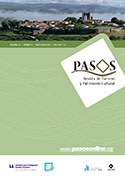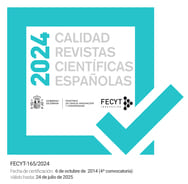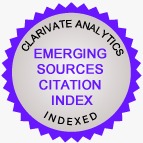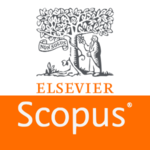Construction of the tourist imaginary in children's magazines in a mesocratic Chile
DOI:
https://doi.org/10.25145/j.pasos.2025.23.027Keywords:
tourism, tourist imaginaries, children's magazines, national identityAbstract
The analysis of children's magazines in Chile following the nitrate crisis highlights the crucial role of the tourist imaginary in reshaping national identity and its assimilation by younger generations. The magazine *El Cabrito*, created during a period of profound change and with an educational purpose, served as the primary focus of this study. Its pages unfold a symbolic map of the nation, designed to be explored by children, aiming to instil a tourist-oriented vision of Chile. This imaginary is rooted in scenic landmarks, emblematic towns, traditional Chilean customs, and historical figures celebrated through metropolitan monumentality and symbols of progress. The tourist imaginary acts as a bridge between declining rural practices, the construction of urban children as tourist subjects, and the redefinition of national identity. The magazine succeeds in intertwining modern symbols with the preservation of elite values, while simultaneously seeking to incorporate the middle classes into a national narrative. However, this imagined nation is built upon the exclusion of Indigenous peoples, whose presence is largely denied or omitted in the magazine’s visual and textual discourse. Thus, *El Cabrito* reflects both the aspirations of modern nation-building and the tensions inherent in shaping a unified identity.
Downloads
Publication Facts
Reviewer profiles N/A
Author statements
- Academic society
- PASOS. Revista de Turismo y Patrimonio Cultural
- Publisher
- Instituto Universitario de Investigación Social y Turismo. Universidad de La Laguna (España) - Instituto Universitario da Maia ISMAI (Portugal)
References
Anderson, B. (1993). Comunidades imaginadas: reflexiones sobre el origen y la difusión del nacionalismo. México: Fondo de Cultura Económica.
Appadurai, A. (1996). Modernity at large: cultural dimensions of globalization. Minneapolis: University of Minnesota Press.
Aurrecoechea, J. M., & Bartra, A. (1989). Puros cuentos, la historia de la historieta en México 1874-1934. México, D.F: Grijalbo.
Booth, R. (2009). Automóviles y carreteras. Movilidad, modernización y transformación del territorio en Chile. (Doctor en Arquitectura y Estudios Urbanos), Pontificia Universidad Católica de Chile, Santiago.
Cortes, M., Vergara, L. M., & Puig, A. (2016). Chile como destino turístico. Las publicaciones periódicas de ferrocarriles del estado: 1933- 1973. Arquitecturas del Sur, 34(50), 8-29.
De Ramón, A. (2003). Historia de Chile: desde la invasión incaica hasta nuestros días (1500-2000). Santiago de Chile: Catalonia.
Frew, E., & White, L. (Eds.) (2011). Tourism and national identities: an international perspective. New York: Routledge.
García, M., & Valdivia, I. (2012). La empresa de ferrocarriles del Estado de Chile y el despertar del turismo nacional: Rutas y paisajes. Estudios Hemisféricos y Polares, 3(2), 88-101.
García Ruiz, M. (2019). El cómic, medio de reafirmación de la identidad nacional. bie3: Boletín IEEE, 13, 736–763.
Girola, L. (2020). Imaginarios y representaciones sociales: reflexiones conceptuales y una aproximación a los imaginarios contrapuestos. Revista de investigación Psicológica, 23, 112-131.
Girola, L., & Alba, M. D. (2020). Imaginarios y representaciones sociales. Reflexiones conceptuales y una breve mención al estado del arte en México. In D. Hiernaux-Nicolas, M. Osorio, & R. Vázquez (Coords.) Los imaginarios sociales y el turismo: Conceptos y aplicaciones. Ciudad de México: Santi Ediciones.
Hiernaux, D. (2002). Turismo e imaginarios. In A. Cordero, D. Hiernaux, & L. Van Duynen (Coords.), Imaginarios sociales y turismo sostenible (pp. 7-36). San José, Costa Rica: FLACSO.
Martínez, J. M. (2019). Lázaro Cárdenas, impulsor del turismo y el arte en Pátzcuaro. PASOS. Revista de Turismo y Patrimonio Cultural, 17(5), 1079–1092.
Martínez, M., Daza, P., & Parra, C. (2022). Elvira Santa Cruz Ossa, Roxane: editorialismo infantil, agencia intelectual y social en el Chile moderno. Sur y Tiempo. Revista de Historia de América, 6, 43-64.
Miranda, P. (2012). La educación geográfica en Chile: desde su aparición en el currículum escolar en el Siglo XIX hasta los ajustes curriculares de 2010. Anekumene, 4, 51-71.
Ordoñez, G. (2019). La historieta y la identidad Nacional en Jóvenes de Secundaria del distrito de Puente Piedra. Universidad Peruana de Ciencias Aplicadas (UPC),
Pack, S. (2019). Turismo e identidad europea de la España contemporánea: tres reflexiones. Ayer. Revista de Historia Contemporánea, 114(2), 123–146.
Peña, M. (1982). Historia de la literatura infantil chilena. Santiago de Chile: Andrés Bello.
Plath, O. (1957). El Calabazo, Vasija Vegetal Noble. Anuario de la Sociedad Folklórica de México, XI, 159-164.
Ramón, M., & García, J. (2016). Fotografía, turismo e identidad nacional en el primer franquismo (1939-1959): Rafael Calleja y la Apología turística de España. Cuadernos de Turismo, 38, 389-414.
Silva, B. (2018). La espacialidad y el paisaje en las representaciones nacionales durante el Frente Popular chileno, 1938-1941. Revista de Historia Social y de las Mentalidades, 1, 129-153.
Vásquez, R., & Osorio, M. (2020). Imaginarios turísticos de las jóvenes universitarias. Un estudio de caso. In D. Hiernaux-Nicolas, M. Osorio, & R. Vázquez (Coords.) Los imaginarios sociales y el turismo: Conceptos y aplicaciones (pp. 109-125). Ciudad de México: Santi Ediciones.
Yáñez, J. C. (2022). El Departamento de Turismo. Una institución precursora del fomento turístico en Chile (1929-1942). Apuntes, 49(91), 73-95.
Downloads
Published
How to Cite
Issue
Section
License
Copyright (c) 2024 Marisela Pilquiman, Juan Carlos Skewes

This work is licensed under a Creative Commons Attribution-NonCommercial-NoDerivatives 4.0 International License.
I confirm that the work is original (of my/our authorship), and that it will not be submitted to other journals or publications until the final resolution of the review process in PASOS, RTPC.
I authorize the publication of my work by PASOS, PSTN of free and open access in any of the formats that I deem appropriate, for an indefinite period of time and as a non-remunerated collaboration.
Likewise, the author(s) understands that the published work may be linked or deposited on any server or included in other publications (republication), provided that the new place and/or new edition references the original publication and acknowledges the authorship and copyright ownership of PASOS RTPC publications.
Authors understand that a plagiarism-self-plagiarism check will be performed, and the article may be removed at any time from the editorial flow.










